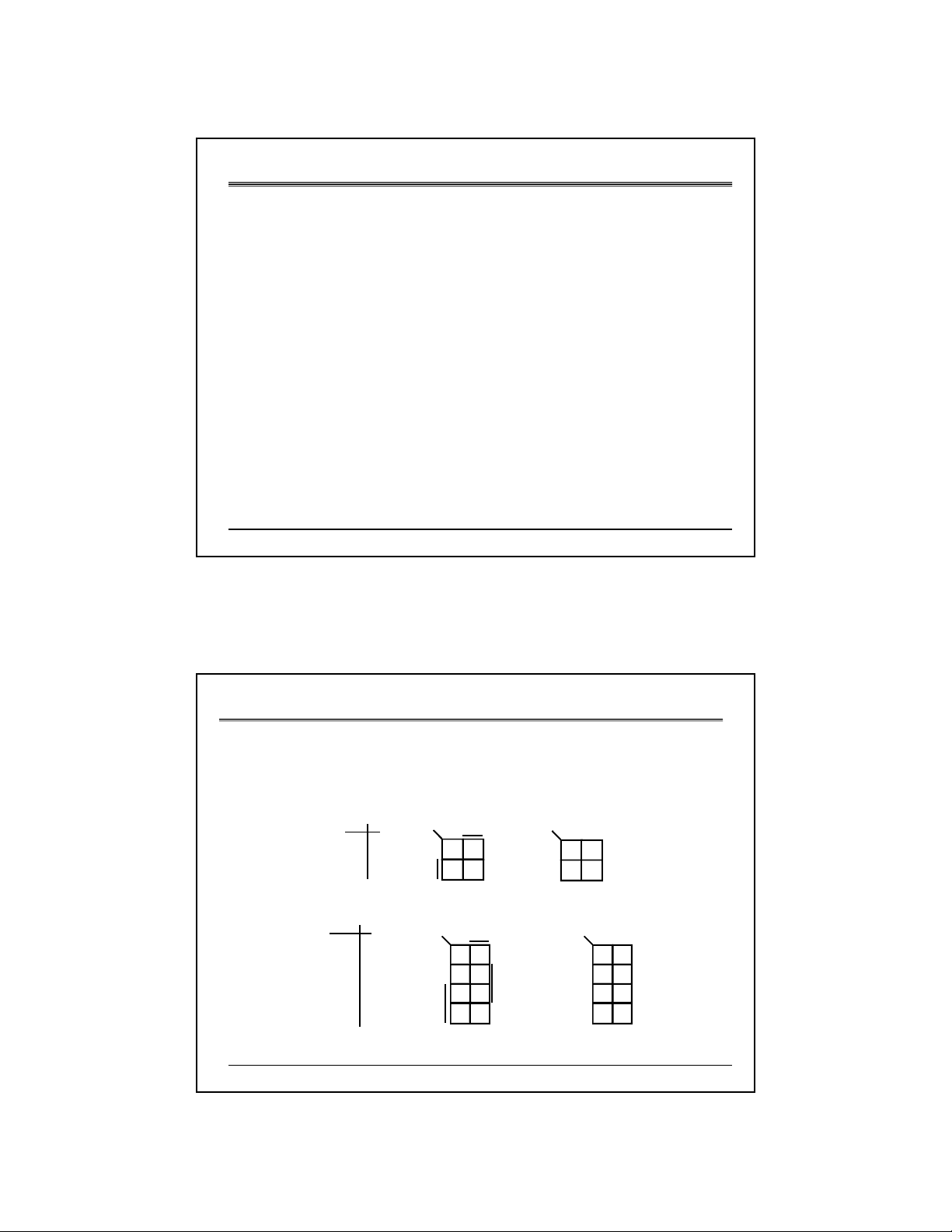
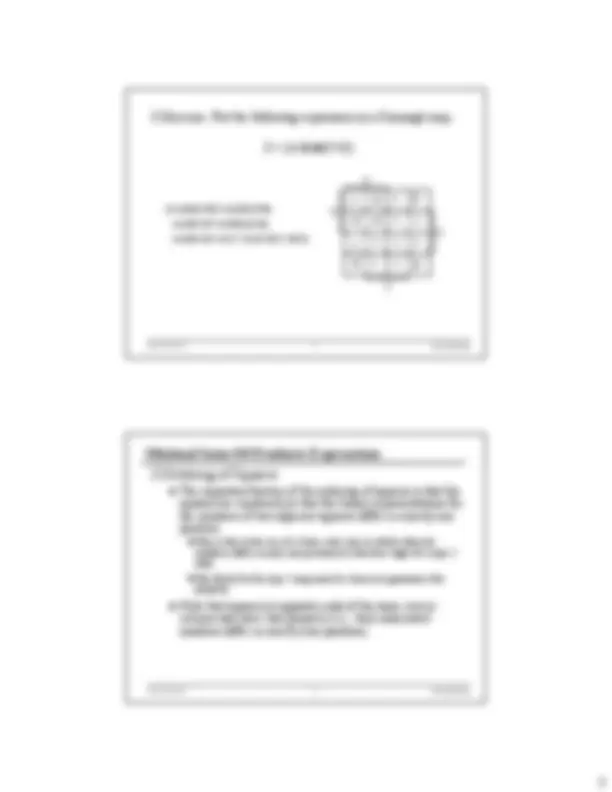
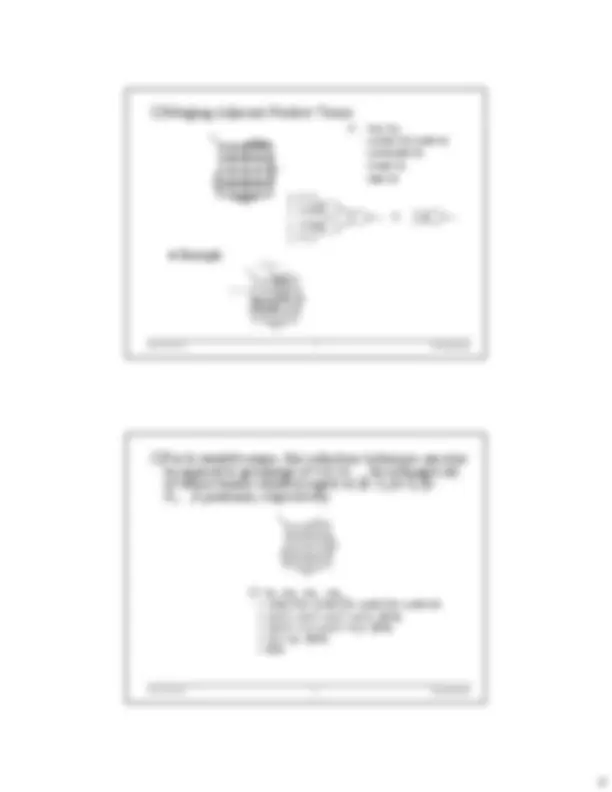

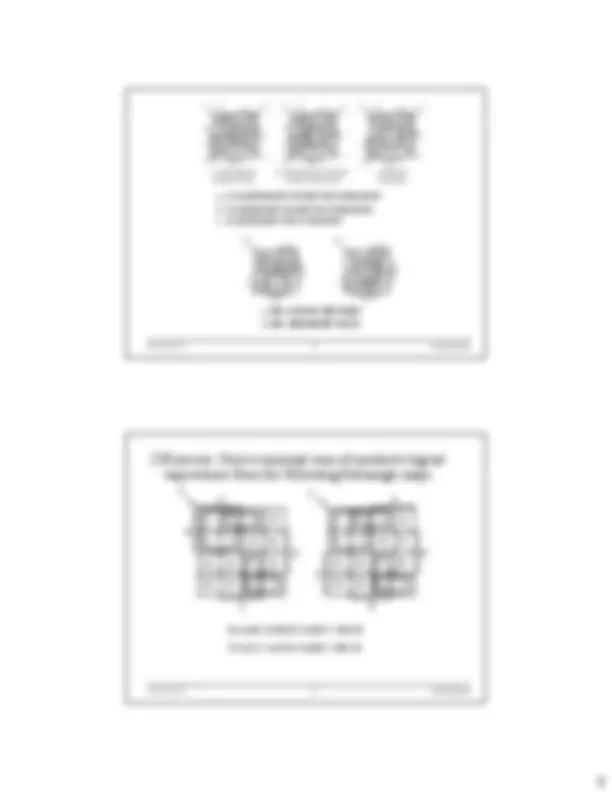
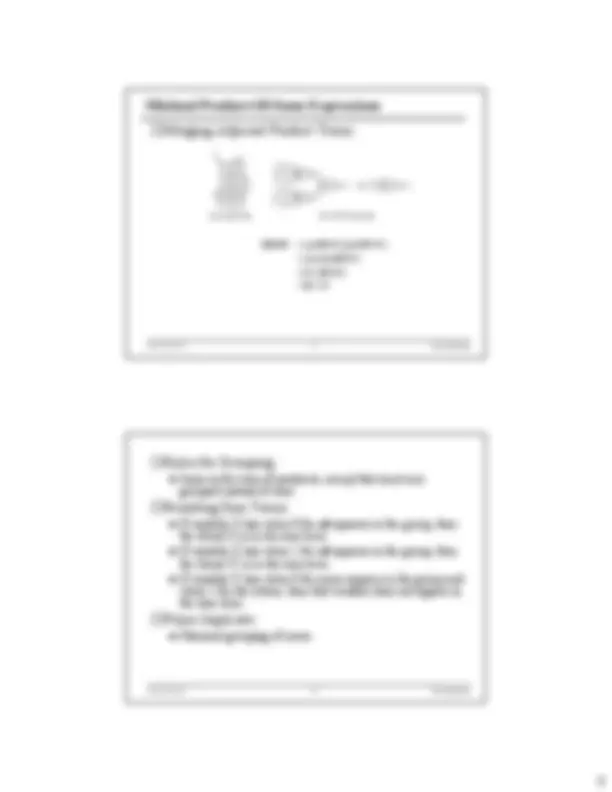
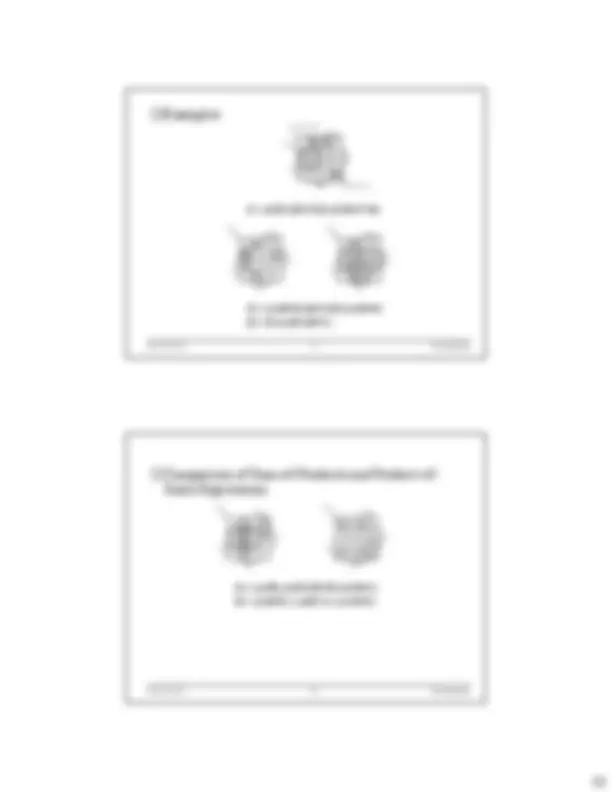
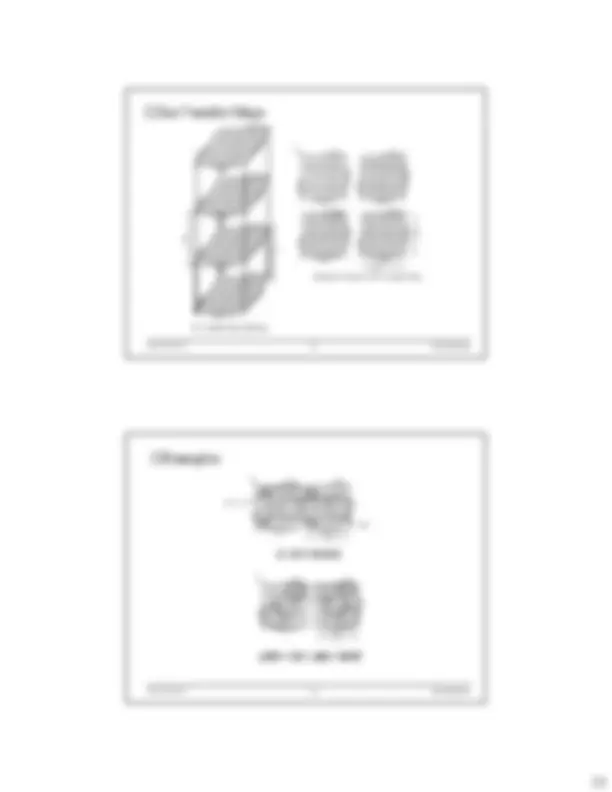
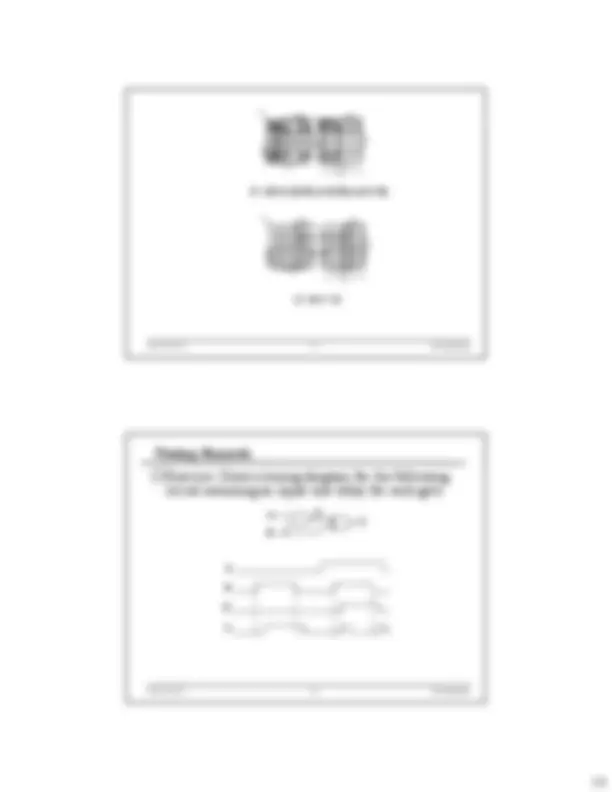
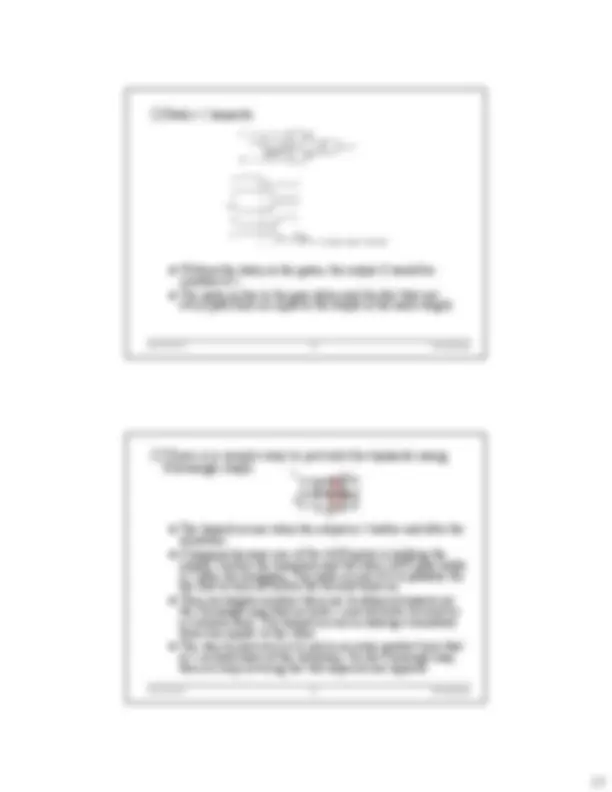
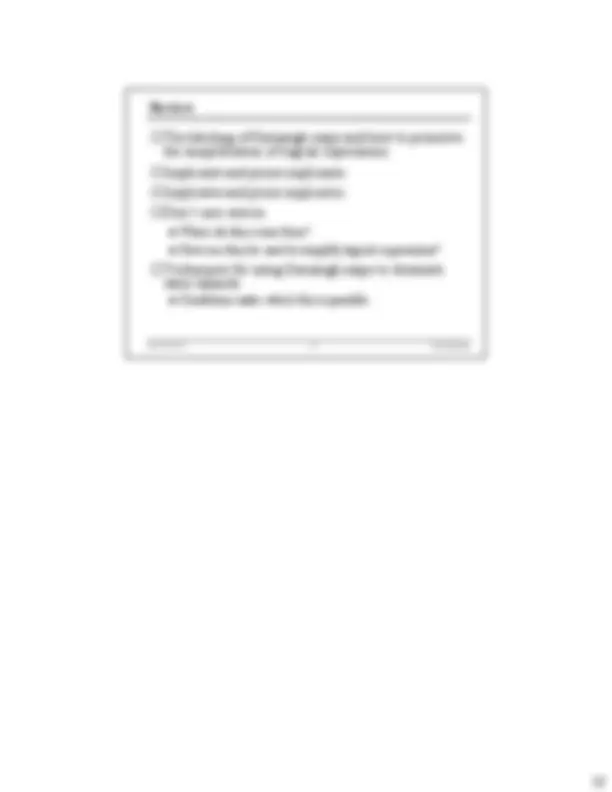


Study with the several resources on Docsity

Earn points by helping other students or get them with a premium plan


Prepare for your exams
Study with the several resources on Docsity

Earn points to download
Earn points by helping other students or get them with a premium plan
Community
Ask the community for help and clear up your study doubts
Discover the best universities in your country according to Docsity users
Free resources
Download our free guides on studying techniques, anxiety management strategies, and thesis advice from Docsity tutors
An in-depth explanation of Karnaugh Maps, a technique for simplifying logical expressions. It covers the definitions, objectives, and uses of Karnaugh Maps for deriving minimal sum-of-products and product-of-sums expressions. The document also introduces the concept of 'don't care' entries and shows how to extend Karnaugh map techniques to include maps with don't care entries.
What you will learn
Typology: Study Guides, Projects, Research
1 / 18

This page cannot be seen from the preview
Don't miss anything!











ECE/CoE 0132 1 Karnaugh Maps
ECE/CoE 0132 2 Karnaugh Maps
ECE/CoE 0132 3 Karnaugh Maps
Four-Variable Maps
ECE/CoE 0132 4 Karnaugh Maps
The interpretation of a type 1 map is that the rows or columns labeled with a variable correspond to region of the map where that variable has value 1.
Numbering of Karnaugh Map Squares.
ECE/CoE 0132 7 Karnaugh Maps
Merging Adjacent Product Terms Z = m 5 m 13 = A'•B•C'•D + A•B•C'•D = (A'+A)•B•C'•D = 1•B•C'•D = B•C'•D
Example
ECE/CoE 0132 8 Karnaugh Maps
For k-variable maps, this reduction technique can also be applied to groupings of 4,8,16,...,2k rectangles all of whose binary numbers agree in (k-2),(k-3),(k- 4),...,0 positions, respectively.
Z = m 5 m 7 m 13 m 15 = A'•B•C'•D + A'•B•C•D + A•B•C'•D + A•B•C•D = (A'•C' + A'•C + A•C' + A•C) • (B•D) = (A'•(C' + C) + A•(C' + C)) • (B•D) = (A' + A) • (B•D) = B•D
ECE/CoE 0132 9 Karnaugh Maps
Basic Karnaugh Map Groupings for Three-Variable Maps.
ECE/CoE 0132 10 Karnaugh Maps
Basic Karnaugh Map Groupings for Four-Variable Maps.
ECE/CoE 0132 13 Karnaugh Maps
Invalid Karnaugh Map Groupings.
Violates Rule 1
Violates Rule 2
loop 1 loop 2
ECE/CoE 0132 14 Karnaugh Maps
In order to minimize the resulting logical expression, the groupings should be selected as follows: Identify those groupings that are maximal in the sense that they are not contained in any other possible grouping. The product terms obtained from such groupings are called prime implicants. A distinguished 1-cell is a cell that is covered by only one prime implicant. An essential prime implicant is one that covers a distiquished 1- cell.
Use the fewest possible number of maximal groupings needed to cover all of the squares marked with a 1.
Examples:
ECE/CoE 0132 15 Karnaugh Maps
a. Z = A•B•D+A•B'•C'+A'•B•C'+A'•C•D+A'•B'•D' b. Z = B•D+A•B'•C'+A'•B•C'+A'•C•D+A'•B'•D' c. Z = B•D+A•B'•C'+A'•C'•D'+A'•B'•C
a. W3 = C'D+AC'+BC+A'B'D' b. W3 = BD+AB+B'C'+A'CD'
ECE/CoE 0132 16 Karnaugh Maps
Exercise: Derive minimal sum-of-products logical expressions from the following Karnaugh maps.
A
C
B
D
A
C
B
D
1 1 1
1 1
1
0 0 1 1
0 0 0
0
0
0
1 1 1
1 1
1
0 0 1 1
0 0 0
0
0
0
X (^) Y
X = A•B + A'•B'•D' + A'•B'•C + B•C•D'
Y =A'•C' + A•C•D' + A•B•C + B•C'•D'
ECE/CoE 0132 19 Karnaugh Maps
Examples:
Z = (A+D')•(B'+C+D)•(A'+B+C'+D)
Z1 = (A+B'+D)•(B+C+D')•(A+B+D') Z2 = D'•(A+B')•(B'+C')
ECE/CoE 0132 20 Karnaugh Maps
Comparison of Sum-of-Products and Product-of- Sums Expressions.
A
Z1 = (A+B')•(A+D')•(B'+D')•(A'+B+C) Z1 = (A•B•D') + (A•B'•C) + (A'•B'•D')
ECE/CoE 0132 21 Karnaugh Maps
A
C
B
D
A
C
B
D
1 1 1
1 0
0
1 1 0 0
1 0 0
1
1
0
1 1 1
1 0
0
1 1 0 0
1 0 0
1
1
0
X (^) X
B•D' + A•C'^ + A•D' + B•C'
Exercise: Derive minimal SOP and POS expressions from the following Karnaugh maps.
X = Y = (B' + D')^ • (A' + C')
ECE/CoE 0132 22 Karnaugh Maps
Don't Care Entries
Assignment of Values to Don't Care Entries.
d
d 0 0
Z = B'+A'•C Z = A•B'+B'•C' Z = B'
0 d 1
1
d 0 d d
d d
1 d
1
d 0
d
d d
d 1
1 1 B Z = B•C + A•D' Z = (C+D')•(A'+B')
ECE/CoE 0132 25 Karnaugh Maps
Six-Variable Maps
ECE/CoE 0132 26 Karnaugh Maps
Examples.
B
Z = B'•C'•E'+B•E
A'B'D + CE + ABD + BD'E'
ECE/CoE 0132 27 Karnaugh Maps
d 1
d
d d d d
d d d d 0 0
1 1
d d d d
Z = (B+C)•(B+E•(A'+D+E)•(A+C+E)
Z = B•C + D
ECE/CoE 0132 28 Karnaugh Maps
Exercise: Draw a timing diagram for the following circuit assuming an equal unit delay for each gate.
Timing Hazards
A
B
X
Y
Y
A
B
X
ECE/CoE 0132 31 Karnaugh Maps
The loop added to prevent the hazard is redundant and not needed to realize the logical expression. Its only purpose is to prevent the hazard.
This technique will avoid all static 1 hazards if only one variable is changed at a time. It is not possible to get a 1 spike from a 2-level AND-OR network by changing only one variable. Why?
ECE/CoE 0132 32 Karnaugh Maps
Static 0 hazard
The static 0 hazard is caused by two OR gates where one holds the output zero before the transition and the other after the transition, and it is possible for them to both be 1 during the transition The fix is to put in an extra OR gate to hold the output zero during the transition
ECE/CoE 0132 33 Karnaugh Maps
Hazards can frequently be ignored. If the signal Z above is not used during the transition, then we don't care if it has a spike. When a signal is used as the input to a flip-flop, it is only sampled with the clock makes a transition. Therefore, if we can make sure that any spikes occur at some other time, they will not be a problem.
ECE/CoE 0132 34 Karnaugh Maps
Tips and Tricks
Use type 2 maps to plot from a truth table
Use type 1 maps to plot expressions and read expressions from a map.
Pitfalls
Forgetting that K-maps "wrap around"
Forgetting that the 4 corners are adjacent
Getting the complements reversed in reading POS expressions from a K-map